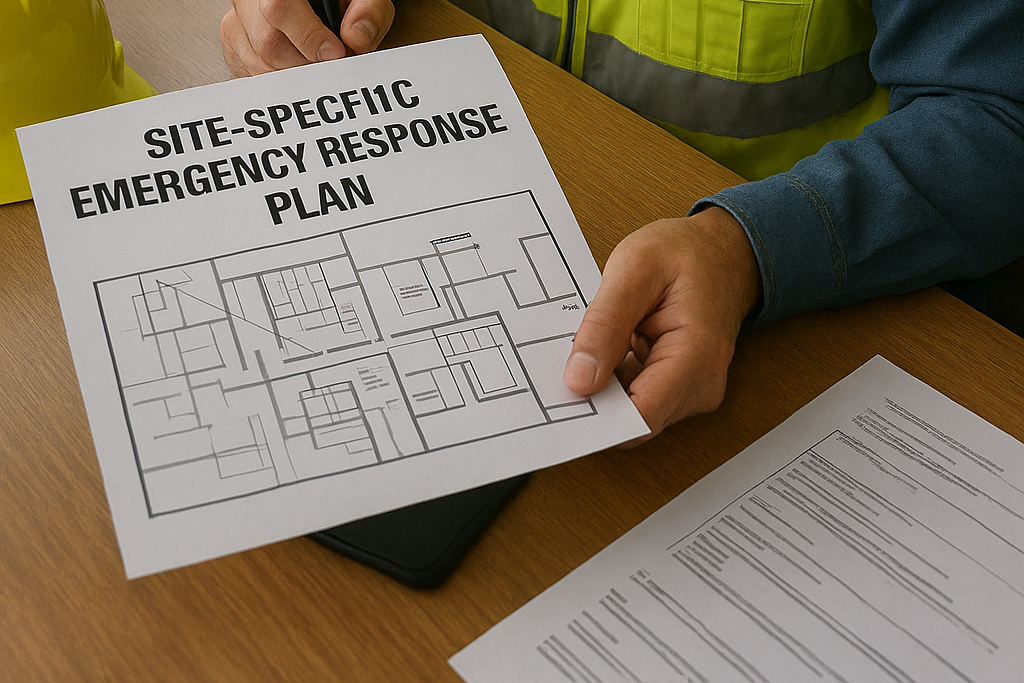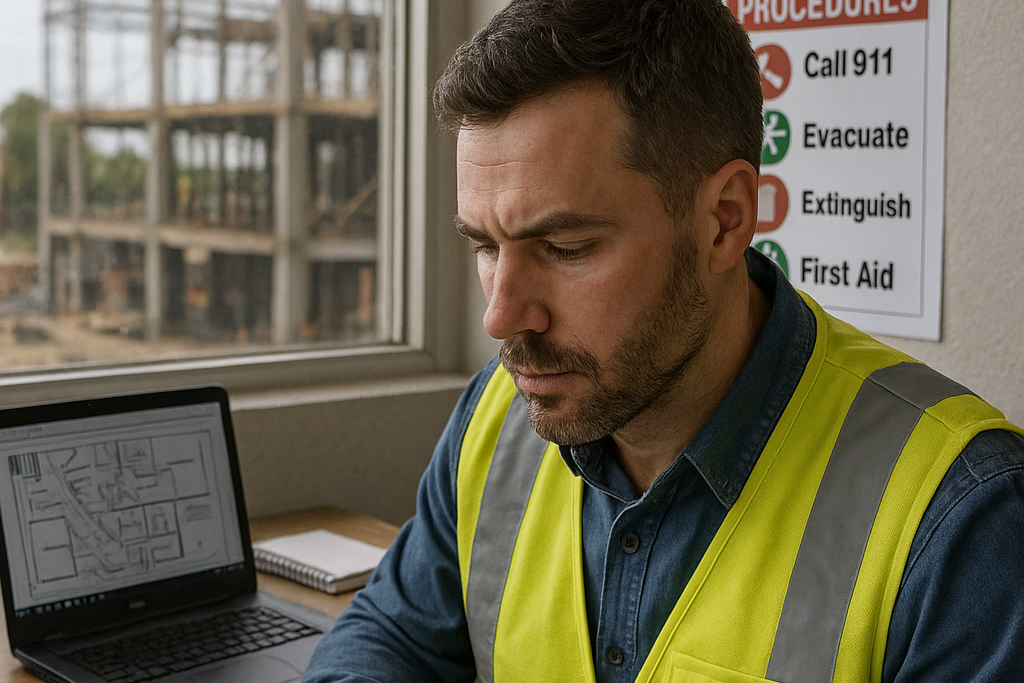How to Build a Site-Specific Emergency Response Plan – Emergencies are unpredictable, but your response to them shouldn’t be. A site-specific emergency response plan (ERP) is a critical tool for safeguarding employees, minimizing property damage, and ensuring regulatory compliance.

Unlike generic emergency procedures, a site-specific ERP is tailored to the unique layout, operations, and risks of your workplace.
Whether you manage a construction site, manufacturing plant, warehouse, or office, this guide walks you through how to build an emergency response plan that’s practical, tested, and legally sound.
🔍 Why Site-Specific Emergency Planning Matters
Generalized emergency plans often fall short when seconds count. Site-specific plans account for unique risks, structural layouts, hazardous materials, and workforce composition. They also help you:
- Stay compliant with regulations (e.g., OSHA, WHMIS, CCOHS)
- Reduce injury and asset loss during emergencies
- Improve confidence and readiness among staff
- Pass safety audits and inspections with ease
Internal link: Read more about Emergency Preparedness Compliance
🧱 Step-by-Step: How to Build a Site-Specific Emergency Response Plan

1. Conduct a Site Risk Assessment
Start by identifying potential emergencies that could affect your site:
- Fire, flood, earthquake, power outage
- Chemical spills or gas leaks
- Violence or active shooter incidents
- Medical emergencies
Use tools like hazard maps, past incident records, and input from safety officers to create a comprehensive risk profile.
2. Map the Physical Layout
Include a floor plan that shows:
- Emergency exits and evacuation routes
- Fire extinguishers, first aid kits, eyewash stations
- Hazardous areas (e.g., electrical rooms, storage)
- Assembly points and shelter-in-place areas
This visual aid should be accessible in printed and digital formats across the facility.
3. Assign Roles and Responsibilities
Designate trained individuals for critical roles:
- Incident Commander – oversees the overall response
- Evacuation Wardens – lead evacuation and account for staff
- First Aiders – provide medical assistance
- Communication Lead – relays info to emergency services and media
Include alternates and ensure proper training for each role.
4. Develop Emergency Procedures
For each scenario identified in the risk assessment, create specific procedures:
- Fire evacuation
- Lockdown protocols
- Spill containment
- CPR and AED use
Ensure these are simple, visual, and easy to follow under pressure. Multilingual versions may be needed for diverse workforces.
5. Establish Communication Protocols
Clear and fast communication is vital. Your ERP should outline:
- How to alert workers (alarms, PA, SMS alerts)
- Who communicates with first responders
- Backup communication methods (e.g., satellite phones)
External DoFollow link: Emergency Preparedness Tips by Public Safety Canada
6. Train and Drill Regularly
A plan is only effective if workers know how to use it. Conduct:
- Annual full-scale drills for all staff
- Quarterly scenario-based tabletop exercises for leadership
- New hire safety orientation that includes ERP overview
Document each drill and use results to improve procedures.
7. Review and Update the Plan Annually
Update your site-specific ERP after:
- Major renovations or layout changes
- New risks or hazardous materials introduced
- Regulatory changes
- Any actual emergency or near-miss
Assign a responsible person to maintain version control.
📘 Example Table: ERP Key Components
| Section | Details |
|---|---|
| Site Information | Company name, address, emergency contact numbers |
| Risk Identification | Fire, flood, medical, chemical, violence, etc. |
| Emergency Contacts | Local fire, police, EMS, internal safety personnel |
| Evacuation Map | Labeled floor plan with routes and safety stations |
| Communication Plan | Notification systems and media protocols |
| Training & Drills | Frequency, documentation, responsibilities |
| Plan Maintenance | Review schedule, revision logs, assigned plan manager |
🚨 Your Emergency Plan is Your Lifeline
An effective site-specific emergency response plan is the difference between chaos and control. Don’t wait for an incident to expose gaps in your preparedness. Instead, take a proactive approach—assess your site, involve your team, and keep refining the plan to fit your evolving workplace.
Internal link: Explore our Workplace Emergency Drill Guide

No comments yet